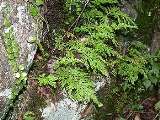
The Taill of the Uponlandis Mous and the Burges Mous
Encyclopedia
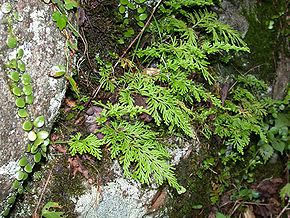
Middle Scots
Middle Scots was the Anglic language of Lowland Scotland in the period from 1450 to 1700. By the end of the 13th century its phonology, orthography, accidence, syntax and vocabulary had diverged markedly from Early Scots, which was virtually indistinguishable from early Northumbrian Middle English...
adaptation of Aesop
Aesop
Aesop was a Greek writer credited with a number of popular fables. Older spellings of his name have included Esop and Isope. Although his existence remains uncertain and no writings by him survive, numerous tales credited to him were gathered across the centuries and in many languages in a...
's Fable
Aesop's Fables
Aesop's Fables or the Aesopica are a collection of fables credited to Aesop, a slave and story-teller believed to have lived in ancient Greece between 620 and 560 BCE. The fables remain a popular choice for moral education of children today...
The Town Mouse and the Country Mouse
The Town Mouse and the Country Mouse
"The Town Mouse and the Country Mouse" is one of Aesop's Fables. It is number 352 in the Perry Index and type 112 in Aarne-Thompson's folk tale index. Like several other elements in Aesop's fables, 'town mouse and country mouse' has become an English idiom....
by the Scottish
Scotland
Scotland is a country that is part of the United Kingdom. Occupying the northern third of the island of Great Britain, it shares a border with England to the south and is bounded by the North Sea to the east, the Atlantic Ocean to the north and west, and the North Channel and Irish Sea to the...
poet Robert Henryson
Robert Henryson
Robert Henryson was a poet who flourished in Scotland in the period c. 1460–1500. Counted among the Scots makars, he lived in the royal burgh of Dunfermline and is a distinctive voice in the Northern Renaissance at a time when the culture was on a cusp between medieval and renaissance sensibilities...
. Written around the 1480s, it is the second poem in Henryson's collection called The Morall Fabillis of Esope the Phrygian
The Morall Fabillis of Esope the Phrygian
The Morall Fabillis of Esope the Phrygian is a cycle of connected poems by the Scottish makar Robert Henryson. In the accepted text it consists of thirteen versions of fables, seven modelled on stories from "Aesop" expanded from the Latin elegaic Romulus manuscripts, one of the standard fable texts...
.
Hennryson's Fabill treats its characters and incidents with a realism that was hitherto unusual in the genre. Its ambiguous portrayal of the two protagonists seamlessly blends their animal and human characteristics in a way that allowed the makar
Makar
A makar is a term from Scottish literature for a poet or bard, often thought of as royal court poet, although the term can be more generally applied. The word functions in a manner similar to the Greek term which means both maker and poet...
to satirise new social classes in the rising burous touns of his day with subtle and philosophical irony.
Plot
The original fable plot is very simple. A town mouse visits a country cousin, takes a scunnerDisgust
Disgust is a type of aversion that involves withdrawing from a person or object with strong expressions of revulsion whether real or pretended. It is one of the basic emotions and is typically associated with things that are regarded as unclean, inedible, infectious, gory or otherwise offensive...
at the poor quality of the fare and invites the cousin back to her town house where the feasting is better. In town it is true that the food is better, more plentiful and very readily available, but the creatures are twice interrupted by inhabitants of the house. The country mouse does not stay to experience a third upset but returns home where the simple food can be enjoyed in peace.
Henryson's second fabill is highly faithful to Aesop's basic structure. His expansion creates fully fleshed scene
Scene (fiction)
In fiction, a scene is a unit of drama. A sequel is what follows; an aftermath. Together, scene and sequel provide the building blocks of plot for short stories, novels, and other forms of fiction.-Characteristics of a scene:...
s from each of the elements and heightens the drama in a number of different ways while remaining essentially concise.
Mous
Mouse
A mouse is a small mammal belonging to the order of rodents. The best known mouse species is the common house mouse . It is also a popular pet. In some places, certain kinds of field mice are also common. This rodent is eaten by large birds such as hawks and eagles...
in Scots is pronounced with a short "oo" vowel, and Henryson's 15th-century spelling of the plural is myis.'
Fabill
Henryson's fabill describes the two mice as sisteris and presents the difference in their lifestyles using human and economic terms that lend them ambiguous overtones. The Uponlandis Mous survives with difficulty like an owtlawExile
Exile means to be away from one's home , while either being explicitly refused permission to return and/or being threatened with imprisonment or death upon return...
living on uther mennis skaith
Manual labour
Manual labour , manual or manual work is physical work done by people, most especially in contrast to that done by machines, and also to that done by working animals...
(lit. harm, in the sense of toil, suggesting the corn planted by farmers) and going hungry in winter. By contrast, the Burges Mous in town has it easy and lives a privileged life like a gild brother
Guild
A guild is an association of craftsmen in a particular trade. The earliest types of guild were formed as confraternities of workers. They were organized in a manner something between a trade union, a cartel, and a secret society...
able to move freely all year but custum mair or les (i.e. without paying tax) among the cheis in ark
Box
Box describes a variety of containers and receptacles for permanent use as storage, or for temporary use often for transporting contents. The word derives from the Greek πύξος , "box, boxwood"....
and meill in kist
Chest (furniture)
A chest is one of the oldest forms of furniture. It is typically a rectangular structure with four walls and a liftable lid, for storage. The interior space may be subdivided...
. It is worth noting that just as Henryson blurs animal and human characteristics he also blurs the gender
Gender
Gender is a range of characteristics used to distinguish between males and females, particularly in the cases of men and women and the masculine and feminine attributes assigned to them. Depending on the context, the discriminating characteristics vary from sex to social role to gender identity...
of the mice.
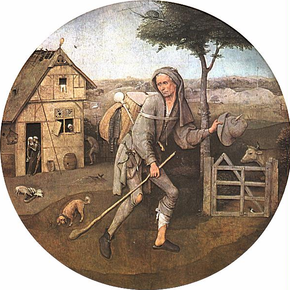
Barefoot
Barefoot is the state of not wearing any footwear. Being barefoot is regarded as a human's natural state, though for functional, fashion and social reasons footwear is worn, at least on some occasions...
, allone, with pykestaf in hir hand/ as pure
Humility
Humility is the quality of being modest, and respectful. Humility, in various interpretations, is widely seen as a virtue in many religious and philosophical traditions, being connected with notions of transcendent unity with the universe or the divine, and of egolessness.-Term:The term "humility"...
pylgryme
Pilgrim
A pilgrim is a traveler who is on a journey to a holy place. Typically, this is a physical journeying to some place of special significance to the adherent of a particular religious belief system...
, and the image is of a lost figure in rugged terrain of uncertain vastness. Their journey back to town even has unlawful overtones (though quite natural for a mouse) as the pair sleep by day and move by night as if in violation of a curfew
Curfew
A curfew is an order specifying a time after which certain regulations apply. Examples:# An order by a government for certain persons to return home daily before a certain time...
.
The fabill has two main scenes. The first is set in the sober wane
Dwelling
Dwelling, as well as being a term for a house, or for living somewhere, or for lingering somewhere, is a philosophical concept which was developed by Martin Heidegger. Dwelling is about making yourself at home where the home itself is a building that is a house...
of the Uponlandis Mous, described as a frail dwelling of moss and fern set under a steidfast
Secure
Secure may refer to:* Security, being protected against danger or loss** Securitate , the secret service of Communist Romania* Security , e.g. secured loans...
stane. It features some highly believable dialogue as the two sisters fall out over the quality of the hospitality and is only eight stanzas long.
The second scene, with equally swiftly described action, takes place in a spence with vittell
Provisioning (disambiguation)
The term provisioning can refer to:* in telecommunications:**Provisioning, equipping a telecommunications network* in shipping:**Provisioning, stocking materials or supplies; especially food...
grit plentie (a well-stocked pantry) in a town house described as being not fer fra thyne (lit. not far from your place). The first figure to interrupt their feast
Banquet
A banquet is a large meal or feast, complete with main courses and desserts. It usually serves a purpose such as a charitable gathering, a ceremony, or a celebration, and is often preceded or followed by speeches in honour of someone....
is the spencer. Henryson departs from Aesop's original by allowing only the Burges Mous a hole in which to escape. Her sister, finding nowhere to go, lies flatlings on the ground in terror.
Visitation number two is a much more frightening development for the mice. After the spencer passes, the Burges persuades her reluctant sister to return to the burde
Table (furniture)
A table is a form of furniture with a flat and satisfactory horizontal upper surface used to support objects of interest, for storage, show, and/or manipulation...
, but
Gib
Gib may refer to:* A castrated male cat or ferret* Gibibit , measurement unit of digitally stored computer information* Gibraltar, British overseas territory* Drywall, construction material...
Hunter, oure jolie cat...
(lines 325-6)
This time the Uponlandis Mous is lucky to escape with her life. After much cruel handling from the cat, she manages to win free only by climbing up between ane parraling
Tapestry
Tapestry is a form of textile art, traditionally woven on a vertical loom, however it can also be woven on a floor loom as well. It is composed of two sets of interlaced threads, those running parallel to the length and those parallel to the width ; the warp threads are set up under tension on a...
and the wall. After the cat has gone, the mous decries her sister's lifestyle and returns home.
- Quhen scho wes furth and freLibertyLiberty is a moral and political principle, or Right, that identifies the condition in which human beings are able to govern themselves, to behave according to their own free will, and take responsibility for their actions...
, scho wes ful faneContentment"Contentment" seems realistically defined as "enjoyment of whatever may be desired". That definition is realistic because the more contented an individual or community becomes the less extreme so more acceptable their desires will be...
, - And merilie markitMarchingSee also: Loaded marchMarching refers to the organized, uniformed, steady and rhythmic walking forward, usually associated with military troops.Marching is often performed to march music, and often associated with military parades....
unto the mureMoorlandMoorland or moor is a type of habitat, in the temperate grasslands, savannas, and shrublands biome, found in upland areas, characterised by low-growing vegetation on acidic soils and heavy fog...
.
(Lines 355-6)
The fabill has a happy ending, but is qualified. The narrator reports in the final stanza only the rumour he has heard that the Uponlandis Mous lived happily ever after.
Moralitas
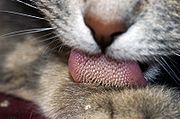
Paean
A paean is a song or lyric poem expressing triumph or thanksgiving. In classical antiquity, it is usually performed by a chorus, but some examples seem intended for an individual voice...
to the virtues of self-sufficiency
Self-sufficiency
Self-sufficiency refers to the state of not requiring any outside aid, support, or interaction, for survival; it is therefore a type of personal or collective autonomy...
and self-control summed up in the line, Quha hes aneuch
Enough (disambiguation)
Enough is a 2002 film starring Jennifer Lopez.Enough may also refer to:In music:*"Enough" , a song by Tarja Turunen*"Enough", a song by Simply Red from A New Flame*"Enough", a song by Cat Power from Myra Lee...
, of na mair hes he neid, a philosophy commonly expressed in many religions and cultures, most especially Daoism. The moralitas is one of the most straightforward and self-contained in Henryson's Morall Fabillis and is manifestly in harmony with the preceding taill (not always the case elsewhere).
Henryson to some degree highlights the second moralitas as standing a little apart from the rest of the poem by composing its four stanzas in ballade
Ballade
The ballade is a form of French poetry. It was one of the three formes fixes and one of the verse forms in France most commonly set to music between the late 13th and the 15th centuries....
form (the first of only two brief departures from rhyme royal
Rhyme royal
Rhyme royal is a rhyming stanza form that was introduced into English poetry by Geoffrey Chaucer.-Form:The rhyme royal stanza consists of seven lines, usually in iambic pentameter. The rhyme scheme is a-b-a-b-b-c-c. In practice, the stanza can be constructed either as a terza rima and two couplets...
in the cycle overall) while nevertheless simultaneously underlining the close link to the story by using a chain of rhyme that runs from the end of the taill into the beginning of the moralitas. Despite employing conventional moral expressions and warnings, the ultimate effect is surprisingly moving.
The first word addresses the audience in intimate and familiar terms as friendis .
Meit
The Uponlandis Mous and the Burges Mous contains several references to meit, or food eaten by the mice and comparisons of the bill of fare between tooun and uponlandis reveals differences. Associated with the Uponlandis Mous' rural existence, the foods included are:- corneWheatWheat is a cereal grain, originally from the Levant region of the Near East, but now cultivated worldwide. In 2007 world production of wheat was 607 million tons, making it the third most-produced cereal after maize and rice...
- quheitCerealCereals are grasses cultivated for the edible components of their grain , composed of the endosperm, germ, and bran...
- ryRyeRye is a grass grown extensively as a grain and as a forage crop. It is a member of the wheat tribe and is closely related to barley and wheat. Rye grain is used for flour, rye bread, rye beer, some whiskeys, some vodkas, and animal fodder...
- nuttisNut (fruit)A nut is a hard-shelled fruit of some plants having an indehiscent seed. While a wide variety of dried seeds and fruits are called nuts in English, only a certain number of them are considered by biologists to be true nuts...
- peisPeaA pea is most commonly the small spherical seed or the seed-pod of the pod fruit Pisum sativum. Each pod contains several peas. Peapods are botanically a fruit, since they contain seeds developed from the ovary of a flower. However, peas are considered to be a vegetable in cooking...
, - watter caillKaleKale is very high in beta carotene, vitamin K, vitamin C, lutein, zeaxanthin, and reasonably rich in calcium. Kale, as with broccoli and other brassicas, contains sulforaphane , a chemical with potent anti-cancer properties. Boiling decreases the level of sulforaphane; however, steaming,...
(as soupSoupSoup is a generally warm food that is made by combining ingredients such as meat and vegetables with stock, juice, water, or another liquid. Hot soups are additionally characterized by boiling solid ingredients in liquids in a pot until the flavors are extracted, forming a broth.Traditionally,...
) - benisBeanBean is a common name for large plant seeds of several genera of the family Fabaceae used for human food or animal feed....
The list ends with candill
Candle
A candle is a solid block or cylinder of wax with an embedded wick, which is lit to provide light, and sometimes heat.Today, most candles are made from paraffin. Candles can also be made from beeswax, soy, other plant waxes, and tallow...
insteid of spyce
Spice trade
Civilizations of Asia were involved in spice trade from the ancient times, and the Greco-Roman world soon followed by trading along the Incense route and the Roman-India routes...
. The foods associated with the Burges Mous's urban life, on the other hand, are:

- cheisCheeseCheese is a generic term for a diverse group of milk-based food products. Cheese is produced throughout the world in wide-ranging flavors, textures, and forms....
- butterButterButter is a dairy product made by churning fresh or fermented cream or milk. It is generally used as a spread and a condiment, as well as in cooking applications, such as baking, sauce making, and pan frying...
- flescheMeatMeat is animal flesh that is used as food. Most often, this means the skeletal muscle and associated fat and other tissues, but it may also describe other edible tissues such as organs and offal...
- fischeSeafoodSeafood is any form of marine life regarded as food by humans. Seafoods include fish, molluscs , crustaceans , echinoderms . Edible sea plants, such as some seaweeds and microalgae, are also seafood, and are widely eaten around the world, especially in Asia...
baith frescheProduceProduce is a generalized term for a group of farm-produced goods and, not limited to fruits and vegetables . More specifically, the term "produce" often implies that the products are fresh and generally in the same state as where they were harvested. In supermarkets the term is also used to refer...
and salt - grotisOatThe common oat is a species of cereal grain grown for its seed, which is known by the same name . While oats are suitable for human consumption as oatmeal and rolled oats, one of the most common uses is as livestock feed...
- meillFlourFlour is a powder which is made by grinding cereal grains, other seeds or roots . It is the main ingredient of bread, which is a staple food for many cultures, making the availability of adequate supplies of flour a major economic and political issue at various times throughout history...
- maltMaltMalt is germinated cereal grains that have been dried in a process known as "malting". The grains are made to germinate by soaking in water, and are then halted from germinating further by drying with hot air...
- muttoun
- beifBeefBeef is the culinary name for meat from bovines, especially domestic cattle. Beef can be harvested from cows, bulls, heifers or steers. It is one of the principal meats used in the cuisine of the Middle East , Australia, Argentina, Brazil, Europe and the United States, and is also important in...
- thraff caikkisOatcakeAn oatcake is a type of cracker or pancake, made from oatmeal, and sometimes flour as well. Oatcakes are cooked on a griddle or baked in an oven.- Scottish oatcakes :...
- mane full fyneWhite breadWhite bread is made from wheat flour from which the bran and the germ have been removed through a process known as milling. Milling gives white flour a longer shelf life by removing the bran which contains oil, allowing products made with it, like white bread, the ability to survive storage and...
insteid of geillGelatinGelatin is a translucent, colorless, brittle , flavorless solid substance, derived from the collagen inside animals' skin and bones. It is commonly used as a gelling agent in food, pharmaceuticals, photography, and cosmetic manufacturing. Substances containing gelatin or functioning in a similar...
Once again, the list is completed with quhyte candill
Wax
thumb|right|[[Cetyl palmitate]], a typical wax ester.Wax refers to a class of chemical compounds that are plastic near ambient temperatures. Characteristically, they melt above 45 °C to give a low viscosity liquid. Waxes are insoluble in water but soluble in organic, nonpolar solvents...
to gust thair mouth withall.
The Uponlandis Mous refers to the seithing of ane kow
Ox
An ox , also known as a bullock in Australia, New Zealand and India, is a bovine trained as a draft animal. Oxen are commonly castrated adult male cattle; castration makes the animals more tractable...
(line 235) as an illustration of excess, while the Burges Mous rather gallusly invokes Christian dietary codes when she boasts, My Gude Friday is better nor your Pace (line 248). The Uponlandis Mous ultimately complains of the urban fare, Thy guse
Goose
The word goose is the English name for a group of waterfowl, belonging to the family Anatidae. This family also includes swans, most of which are larger than true geese, and ducks, which are smaller....
is gude, thy gansell
Sauce
In cooking, a sauce is liquid, creaming or semi-solid food served on or used in preparing other foods. Sauces are not normally consumed by themselves; they add flavor, moisture, and visual appeal to another dish. Sauce is a French word taken from the Latin salsus, meaning salted...
sour as gall
Bile
Bile or gall is a bitter-tasting, dark green to yellowish brown fluid, produced by the liver of most vertebrates, that aids the process of digestion of lipids in the small intestine. In many species, bile is stored in the gallbladder and upon eating is discharged into the duodenum...
(line 345) and the narrator in the moralitas refers to fitches
Weed
A weed in a general sense is a plant that is considered by the user of the term to be a nuisance, and normally applied to unwanted plants in human-controlled settings, especially farm fields and gardens, but also lawns, parks, woods, and other areas. More specifically, the term is often used to...
and seid
Seed
A seed is a small embryonic plant enclosed in a covering called the seed coat, usually with some stored food. It is the product of the ripened ovule of gymnosperm and angiosperm plants which occurs after fertilization and some growth within the mother plant...
(line 367).
One point of equivalence in dietary matters between the two scenes is the reference in both to candlewax as the condiment
Condiment
A condiment is an edible substance, such as sauce or seasoning, added to food to impart a particular flavor, enhance its flavor, or in some cultures, to complement the dish. Many condiments are available packaged in single-serving sachets , like mustard or ketchup, particularly when supplied with...
the mice use (instead of spice) to add gust or "flavour" to their meals, while on the matter of drink, Henryson makes a special point that the mice drink the watter cleir
Drinking water
Drinking water or potable water is water pure enough to be consumed or used with low risk of immediate or long term harm. In most developed countries, the water supplied to households, commerce and industry is all of drinking water standard, even though only a very small proportion is actually...
/ insteid of wyne
Wine
Wine is an alcoholic beverage, made of fermented fruit juice, usually from grapes. The natural chemical balance of grapes lets them ferment without the addition of sugars, acids, enzymes, or other nutrients. Grape wine is produced by fermenting crushed grapes using various types of yeast. Yeast...
(lines 272-3).
Numbers
The fabill is a taill of 29 stanzas with a moralitas of 4 stanzas.- 29 + 4 = 33
The last stanza of the taill is an endnote to the action giving the narrator's conclusion. This produces a division:
- 28 + 1 = 29
If the point at which the mice pass in company from country to town is taken as the fundamental point of division between the two scenes in the taill, then the action can be further divided:
- 14 + 15 = 29
The first major turning point in the action (the Uponlandis Mousis sudden consent to follow her sister back to town) occurs in the last line of stanza 13.
Extract
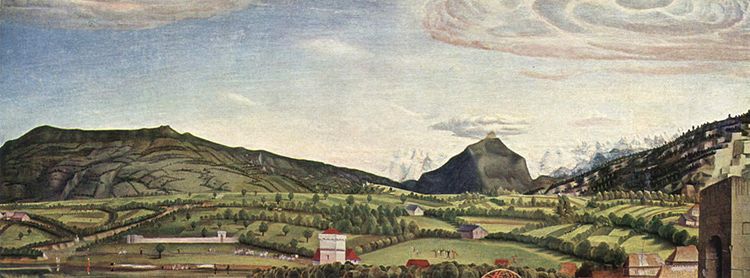
When the Burges Mous ventures forth to seek her rural cousin beyond the confines of city, the picture of her as a figure in a landscape (created in a very few words) produces a highly ambiguous sense of scale:
- Furth mony wilsumWildernessWilderness or wildland is a natural environment on Earth that has not been significantly modified by human activity. It may also be defined as: "The most intact, undisturbed wild natural areas left on our planet—those last truly wild places that humans do not control and have not developed with...
wayis can scho walk: - Throw mosseWetlandA wetland is an area of land whose soil is saturated with water either permanently or seasonally. Wetlands are categorised by their characteristic vegetation, which is adapted to these unique soil conditions....
and mureMoorlandMoorland or moor is a type of habitat, in the temperate grasslands, savannas, and shrublands biome, found in upland areas, characterised by low-growing vegetation on acidic soils and heavy fog...
, throw bankLeveeA levee, levée, dike , embankment, floodbank or stopbank is an elongated naturally occurring ridge or artificially constructed fill or wall, which regulates water levels...
is, busk and breir, - Fra furRidge and furrowRidge and furrow is an archaeological pattern of ridges and troughs created by a system of ploughing used in Europe during the Middle Ages. The earliest examples date to the immediate post-Roman period and the system was used until the 17th century in some areas. Ridge and furrow topography is...
to fur, cryand fra balkRidge and furrowRidge and furrow is an archaeological pattern of ridges and troughs created by a system of ploughing used in Europe during the Middle Ages. The earliest examples date to the immediate post-Roman period and the system was used until the 17th century in some areas. Ridge and furrow topography is...
to balk: - "Cum furth to me, my awin sister deir,
- Cry peip anis!"...
- Listen: [Link under construction.]

